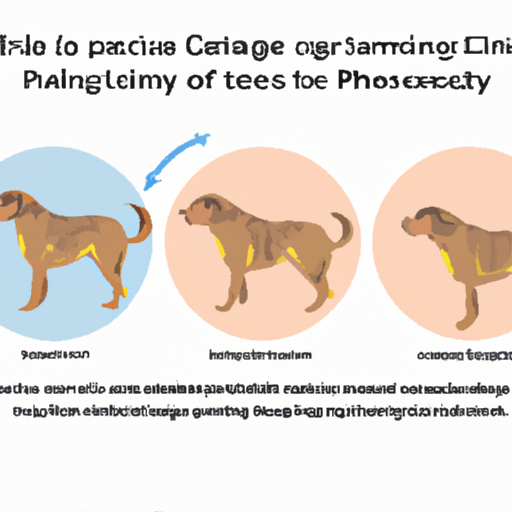Understanding the Canine Estrous Cycle
You may be used to hearing about menstrual cycles in humans, but did you know dogs have their own version? It’s called the estrous cycle. Unlike human females, who typically cycle monthly, most dogs cycle only twice a year.
The estrous cycle in dogs consists of four stages:
- Proestrus: This is similar to the follicular phase in humans, when the body is preparing for potential pregnancy. Your dog may start to act differently, displaying signs of restlessness or clinginess. You might also notice some swelling in her vulva and a bloody discharge, similar to a period in humans.
- Estrus: This phase is often referred to as “heat” and it’s when your dog is fertile and can conceive puppies. The discharge may become more watery and change to a straw or pink color.
- Diestrus: If your dog is not pregnant, this phase resembles the luteal phase in humans, when the body starts to return to its normal state. If she is pregnant, this phase will last until she gives birth.
- Anestrus: This is the resting period between cycles, when your dog’s body is recovering and preparing for the next cycle.
Recognizing the Signs of Your Dog’s Estrous Cycle
As a caregiver, it’s crucial for you to understand what to look for during each stage of your dog’s cycle. Here’s a detailed breakdown:
Proestrus:
- Swelling of the vulva
- Bloody discharge
- Changes in behavior
Estrus:
- Change in discharge color
- Increased urination
- Willingness to mate
Diestrus:
- Swelling subsides
- Discharge stops
- Behavior returns to normal
Anestrus:
- No physical changes
- Normal behavior
Managing Your Dog’s Estrous Cycle
The estrous cycle can be a stressful time for both you and your dog. Here are some tips on how to manage:
- Keep her comfortable: Provide a cozy bed and extra attention to help soothe her.
- Keep her clean: Regular baths and sanitary pads can help manage the discharge.
- Keep her safe: If you’re not planning on breeding, it’s important to prevent unwanted pregnancies. This could mean keeping her indoors or on a leash during walks.
Health Concerns Related to the Estrous Cycle
While the estrous cycle is a natural process, there can be health issues that arise. These could include infections (pyometra), irregular cycles, and false pregnancies. If you notice anything unusual, such as an overly long cycle, excessive discharge, or signs of discomfort, it’s important to consult with a veterinarian.
FAQ
Q: How long does a dog’s estrous cycle last?
A: The entire cycle lasts around six months, but the proestrus and estrus stages (when you’ll see physical signs) usually last around three weeks.
Q: How can I tell if my dog is in heat?
A: Look for swelling of the vulva, changes in behavior, and a bloody discharge that changes in color and consistency.
Q: Is it dangerous for my dog to get pregnant during her first heat?
A: It’s generally recommended to wait until at least the third heat cycle before breeding a dog, but it’s always best to consult with a veterinarian.
Q: Should I spay my dog to avoid the estrous cycle?
A: Spaying is a personal decision that depends on various factors. It does prevent the estrous cycle and potential related health issues, but it’s best to discuss with a vet.
Q: My dog’s cycle seems irregular. Should I be concerned?
A: While some variability is normal, major irregularities should be brought to the attention of a vet.



